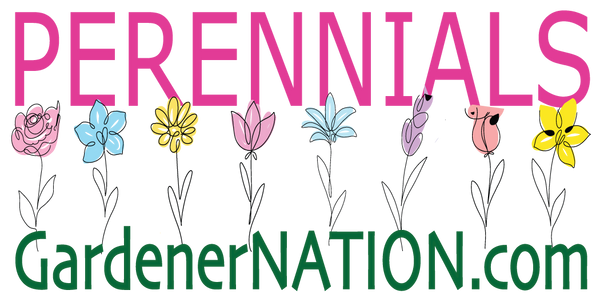
What are hardiness zones—and why they matter to Canadian gardeners
Share
Recently, someone accused me of lying on one of my Facebook advertisements about growing this Zone 6 plant, "PRIMULA vialii (Miracle, Red Hot Poker)" successfully in my garden here in Zone 4 Powassan, Ontario. That’s what prompted me to write this.
Let me be clear: I’m in business and the foundation of success of any business is honesty and selling reliable products . I grow and sell perennials because I love unusual and interesting plants and I want to be a boutique source for gardeners that is different from box stores and large garden centres. I’m always experimenting to see what’s actually possible—right here, in real-world conditions, not just on paper.
Some of those experiments fail. But some succeed, and when they do, they offer a little thrill—and open up new possibilities for northern gardeners like us.
My goal is simple: I want people to visit our gardens so they can see what’s growing with their own eyes. I want them to gain confidence, get curious, and maybe push their own gardens a little further too. Because the truth is, hardiness zones are just a starting point—not a fence.
If you’ve spent any time choosing perennials for your garden, you’ve likely come across the term “hardiness zone.” In Canada, this number—often listed on plant tags or in seed catalogs—is meant to help gardeners select plants that can survive winter in their region. But what does that number really mean? And can you stretch the limits?
🌱 Let’s dig into it.
🇨🇦 Understanding Canadian hardiness zones
Canada’s Plant Hardiness Zones are determined by Environment Canada and reflect the average lowest winter temperatures in different parts of the country. The scale ranges from Zone 0 (coldest) to Zone 9 (mildest).
Each zone represents a geographic area where certain perennials, trees, and shrubs are expected to survive the winter without protection. For example, if you live in Zone 4, plants labeled “hardy to Zone 4” are considered safe bets for your climate. Anything higher—say, Zone 5 or 6—is theoretically at risk.
🌨️ Why snow Is your Garden’s secret weapon
Here’s something many gardeners overlook: snow is insulation.
A reliable blanket of snow over your garden beds can protect roots and crowns from sudden temperature drops, drying winds, and freeze-thaw cycles. This means that in places like Zone 4 with consistent snow cover, it’s often possible to successfully grow plants rated for Zones 5—even 6.
In fact, some perennials that technically aren’t hardy in Zone 4 do just fine in gardens with a thick, insulating snowpack.
But be warned—climate change is shifting the rules. A mild winter without snow can prove devastating to plants you’re pushing beyond their zone, leaving them exposed and unprotected. It’s not just about the cold—the absence of snow is often more dangerous than the cold itself.
☀️ Other factors that expand (or shrink) your growing zone
Your zone is a helpful guideline, but it’s not the whole story. Many variables affect whether a plant will survive in your garden:
- Microclimates: A south-facing wall, sheltered corner, or stone patio can create pockets of warmth.
- Wind exposure: Cold, drying winter winds can kill borderline plants. Shelter helps.
- Drainage: Wet soil in winter is deadly. Raised beds or gravelly soil improve survival.
- Sun exposure: More winter sun = more soil warmth = better odds for tender plants.
🌱 The real key: Experiment—and find a local nursery that does too
The truth is, no map or plant tag knows your exact yard. The only way to really understand what thrives where you live is to experiment a little.
Try one plant that’s slightly outside your zone. Keep notes. See what survives, what struggles, and what thrives.
Better yet, partner with a nursery that tests plants in your region. Local growers who trial perennials in your climate are your most valuable resource—they’ll know which Zone 5 or 6 plants routinely survive in Zone 4 conditions, and which ones are best left for warmer regions.
🧪 Gardening Is part science, part art
Hardiness zones are a helpful starting point—but not a rule carved in stone. Snow cover, soil type, exposure, and even climate variability from year to year can all shift what’s possible in your garden.
So be curious. Take notes. Push the boundaries when it makes sense.
And remember—every resilient plant in your garden is a little victory.
Visit Gardener Nation to see what I have been able to grow in Zone 4
At Gardener Nation we guarantee unmatched customer service. Say goodbye to endless wandering through crowded nurseries and hello to a relaxing, personalized shopping adventure. 🌸🌼
You will be seated overlooking Ruth Lake and while sipping a refreshing beverage, you will handpick your dream garden from our stunning look-book of locally grown perennials. 🧋📒
Our expert team, will gather your chosen plants while you unwind in style. It's that easy! 😎
OR
🚐 WE DELIVER FOR ORDERS OVER $200: Place your order over the phone or online.
- 👩🏽💻 www.GardenerNation.com
- ☎️ Landline: 705-724-5050
HOURS: June 7 - September 28, 2025:
- Thursday: 9:00 to 6:00
- Fri, Sat, Sun: 9:00 to 4:00
ADDRESS:
- On Ruth Lake ⛱
- 494 Swalwell Drive, Powassan, ON
